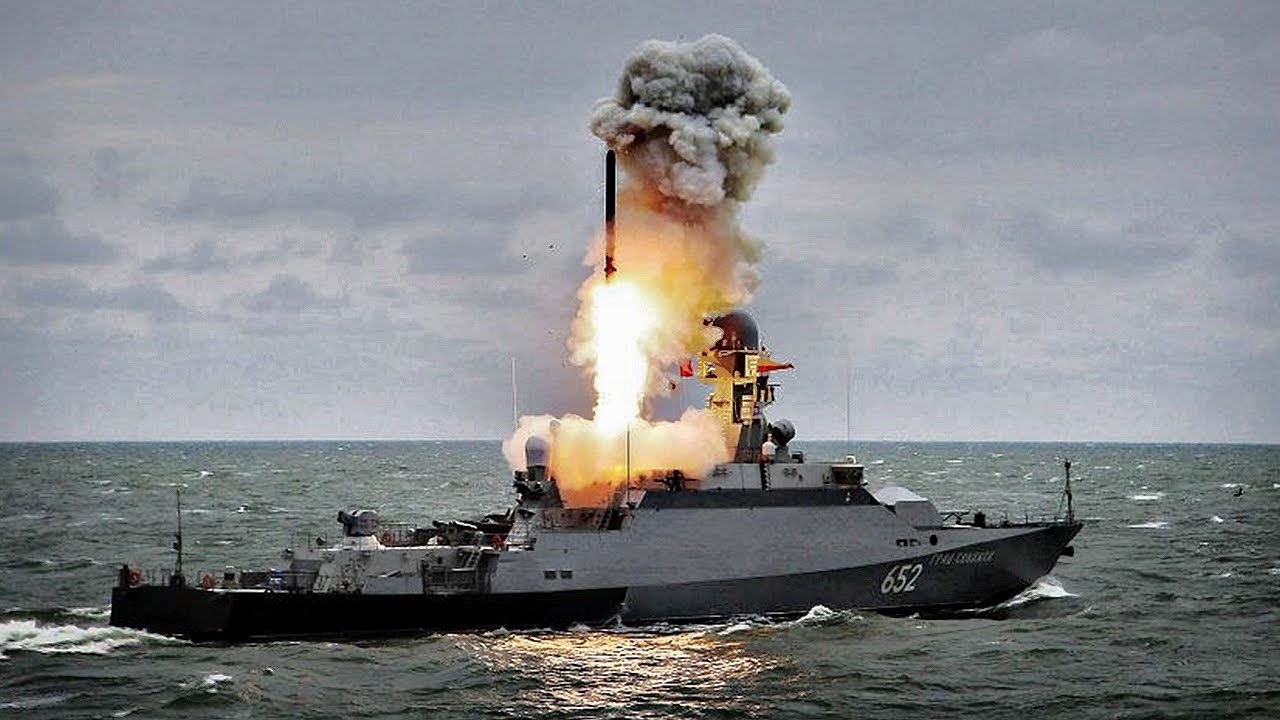Ukraine Tells Russia to Leave Crimea Following Kalibr Missile Explosion – Natalia Humeniuk, the head of the Joint Press Center for the Ukrainian Operational Command South, said on Tuesday that it was time for Russia to “leave” Crimea – the Ukrainian territory annexed in 2014 – in the wake of explosions that occurred in the city of Dzhankoi earlier this week.
“Dzhankoi is a hub station. Even at the beginning of a full-scale invasion, it was said that the defeat of logistics would be the main means of influencing the enemy’s ideas of what to do in Crimea,” Humeniuk said. “Now the course is clearly set that they need to leave.”
Russia’s Kalibr missiles are some of the most deadly weapons in the country’s weapons arsenal, making the strike particularly impactful for both sides.
Kalibr missiles are designed to be launched from ships, including Russia’s warships in the Black Sea, and can strike targets on land from as far away as 2,500km.
The Explosion Explained
On Monday, Ukrainian defense authorities confirmed that an explosion occurred in the city of Dzhankoi in Crimea. The explosion reportedly destroyed Russian Kalibr cruise missiles that were in the process of being moved by rail.
Ukrainian officials did not take responsibility for the strike at first, though the language used in the official statement suggested that the attack was conducted by Ukrainian special forces.
Specifically, the statement referred to the strike as a “mysterious cotton,” a phrase that plays on the Russian word “khlopok” and the Ukrainian word “bavovna,” both of which mean “cotton” and are used to refer to Ukrainian strikes on Russian military infrastructure.
The term has been used before when Ukrainian forces targeted Russian ammunition depots.
Video footage shared online shows huge explosions creating a fireball, indicating that the cruise missiles detonated while being transported.
Russian and Ukrainian officials disagree on how much damage was caused by the blast. Sergei Aksyonov, the Russian-installed governor of Crimea, claimed that anti-aircraft weapons had been fired around the city but did not explain why, nor did he reference any damage to Russian cruise missiles.
Video footage, however, reveals that significant strikes did take place, and an adviser to the Ukrainian Ministry of Interior Affairs, Anton Gerashchenko, also shared video footage that appears to show a railway station being struck by an unidentified weapon.
Russian cruise missiles “Kalibr NK” were destroyed in Dzhankoi, Crimea, during their transportation by rail – @DI_Ukraine
It is reported that this video is from Dzhankoi. The voice says it’s the train station area. pic.twitter.com/9UXMe2aKNR
— Anton Gerashchenko (@Gerashchenko_en) March 20, 2023
Russian officials say that the explosion was caused by a drone strike.
Igor Ivin, a local Russian official in the city, said that drone strikes in the area also damaged a nearby grocery store.
MORE: PAK DA – Is Russia New Stealth Bomer a Joke?
MORE: Was the F-14 Tomcat Retired Too Early?
MORE: Nimitz-Class – The Best Aircraft Carrier Ever?
Jack Buckby is 19FortyFive’s Breaking News Editor. He is a British author, counter-extremism researcher, and journalist based in New York. Reporting on the U.K., Europe, and the U.S., he works to analyze and understand left-wing and right-wing radicalization, and reports on Western governments’ approaches to the pressing issues of today. His books and research papers explore these themes and propose pragmatic solutions to our increasingly polarized society.

